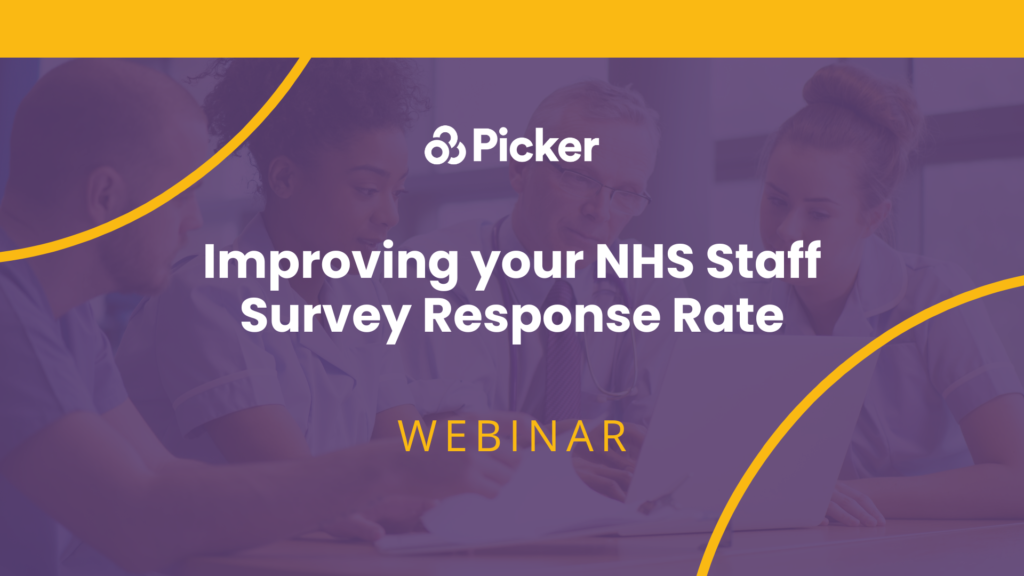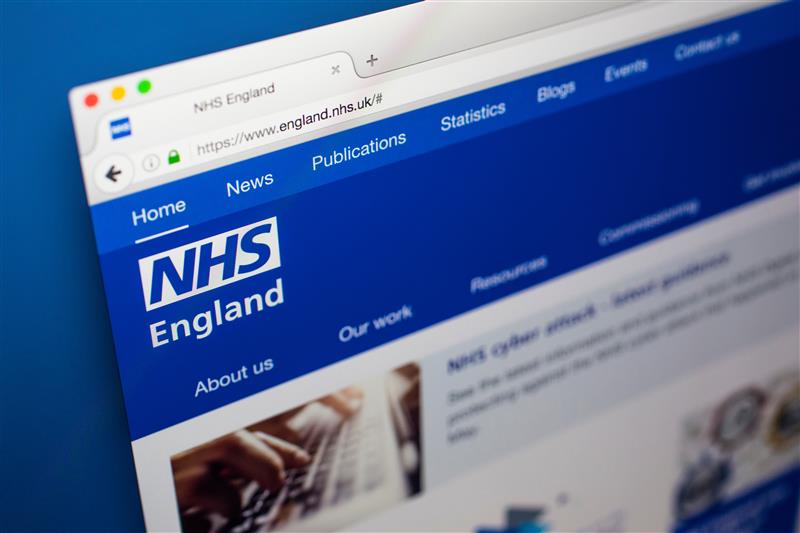How to improve your NHS Staff Survey response rate
At Picker, planning for the next iteration of the NHS Staff Survey is well underway. One of the largest workforce surveys in the world, it’s carried out every year to understand staff experiences across the NHS and measure progress against the NHS People Promise. It’s an opportunity for all staff to share their experiences of working conditions, and they should be encouraged to take part.
Overall, the NHS Staff Survey achieved a national response rate of 48% in 2021: a good benchmark figure for trusts to aim for, but how can this be achieved? Maximising your organisation’s response rate requires a strategy that ensures as many staff as possible are engaged. Here at Picker, we have run the survey on behalf of NHS England since 2011 and have been an approved contractor since the survey’s launch. In that time, we have seen many successful approaches that trusts have introduced to improve response rates. Below, the essential elements for achieving a higher response rate are broken down into the three key survey phases: before, during, and after fieldwork:
Before the Survey
- Publicise the value of the survey.
Reach out in multiple formats using a range of methods that will get through to staff – posters, newsletters, staff bulletins/briefings, pre-survey communications (eg, messages from the Chief Executive or Organisational Development (OD) Leads), screen savers, and even notices in bathrooms!
We recommend you include information about the survey’s strategic purpose, how to get involved and explain how the results have been used in the past and plans for future improvements. Include messages of support from senior teams, and importantly thank staff for their time and co-operation. Be clear about the importance of the survey, and state that staff responses will directly affect the trusts’ people plan.
Staff must understand how seriously the organisation is taking the survey, and that this is a way that they can affect change.
- Update and clean staff contact details.
Many emails are returned undelivered every year, usually because of typos or out-of-date address details. Staff won’t be able to complete a survey that they never receive! After the first survey email, Picker will provide a file of failed addresses to the trusts they work with. Keep an eye out for this, update your records, and return before the second email is sent to reach people missed in the first round.
- Tailor your communications.
As an organisation, you have the opportunity to include customisations to your NHS covering letter, including a section about incentives and a small additional paragraph. There is also the option to include an additional custom letter, such as a message from the CEO. This is a great way to localise your survey and to make it obvious to staff that the collection is not just a national initiative.
- Ensure that staff understand that responses are confidential.
Independent contractors run the NHS Staff Survey and are responsible for processing all data. Personalised links and logins are used purely to determine if a person has previously responded, and all this information is removed when their feedback is received. Staff personal details will never be linked to their responses, nor will they be shared with the organisation in a way that allows them to be identified. To help preserve anonymity, reports do not provide feedback on any group with ten or fewer responses.
- Tailor your survey methodology to the easiest method for staff to respond.
The survey can be distributed by email or paper copy, and depending on the staff group, one method may be more suitable than another. Consider whether staff members have readily available access to a computer and if they have any accessibility needs.
Remember, if you are using paper surveys, you need a clear distribution strategy. How will the surveys get from the post room/delivery point to the individual staff members? Make sure that you have the necessary staff and processes in place.
During the survey
• Publicise the value of the survey.
Remember to keep the survey’s profile high throughout the fieldwork period (late September through to the beginning of December). Publicise current response rates (available on your Picker dashboard), use champions to promote the survey, and answer any questions or concerns promptly.
• Regularly review and respond to response rates.
Target communications to departments or staff groups where the response rate may be lower than expected. Engage with these staff and understand any potential barriers to completion. Encourage healthy competition between areas – feel welcome to recognise and reward those that are particularly successful.
• Incentivise participation.
Many organisations provide a small recognition of thanks, such as a free drink, snack, or a random prize draw for completing a survey. Note that in the case of prize draws, the contractor will always contact the respondent to check that they are happy for the organisation to know that they have completed the survey and are therefore eligible for a prize . We will never release a staff member’s responses (and will never release for groups with ten or fewer responses); we will simply say whether or not people have completed the survey.
• Provide a time/area for staff to complete the survey.
Staff should be allowed to complete the survey during work time, and if they don’t have regular access to computers but have been sent an online survey, they should be given access to facilities to support them in completing it.
After the survey
- Publicise the value of the survey.
Thank your staff for completing the survey and explain the next steps. How will you respond to the feedback and provide regular updates about progress as an organisation? One of the most significant barriers to completion is staff thinking that nothing is happening or going to happen with the insights they provide.
If you work with Picker, you will receive two complimentary delegate passes to our insight and improvement workshops, where you’ll participate in peer-to-peer learning and discuss ways to create a continuous improvement cycle.
There are many factors to consider to maximise your response rate. Picker is an expert in running this survey, and we can guide you every step of the way. We utilise a Lean Six Sigma approach to run the survey efficiently and maximise engagement.
If you’d like more information about working with us on the NHS Staff Survey email Jagdip.sidhu@pickereurope.ac.uk, or call 01865 208164.
Webinar available!
You can watch our webinar on how to improve your survey response rate here.

Find out how other trusts have made changes using insights from the NHS Staff Survey:

Lincolnshire Partnership NHS Foundation Trust has been on an improvement journey. The CQC described it as “a continued and impressive cultural shift… that enabled and empowered staff and patients to be heard”. Read more.

East Lancashire Hospitals NHS Foundation Trust (ELHT) – using feedback from the National quarterly Pulse Survey (NQPS) and NHS Staff Survey they set about rebuilding ELHT with the clear intention to create a culture where staff felt they belonged.

